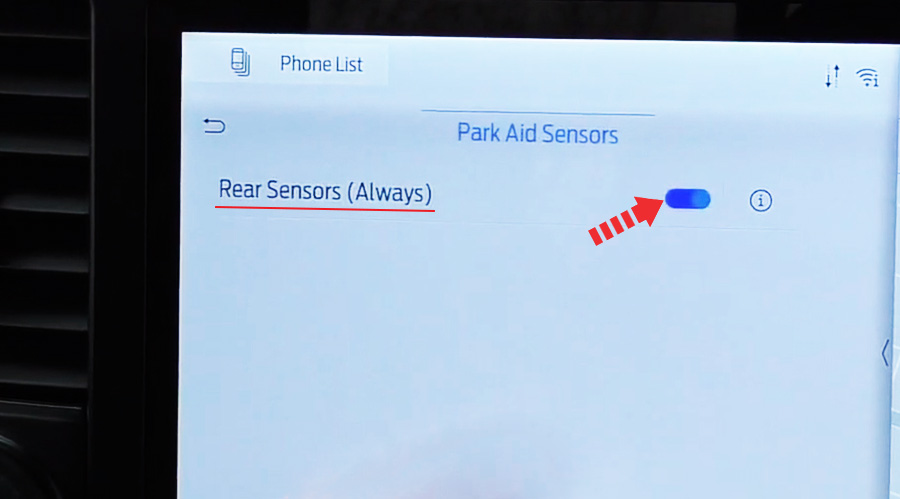The parking aid on Ford F-150 warns the driver of the car acoustically and visually. Rear parking sensors detect objects behind your vehicle when in reverse (R). Beeps are used to warn of the obstacle. The closer the vehicle comes to the obstacle, the shorter the intervals between the tones.

A warning tone sounds when your vehicle approaches an object. As your vehicle moves closer to an object, the rate of the tone increases. The warning tone continuously sounds when an object is 12 in (30 cm) or less from the rear bumper. If your vehicle remains stationary for a few seconds, the audible warning turns off. If your vehicle moves backward the tone sounds again.
When you connect a trailer to your vehicle, the rear parking aid detects the trailer and provides an alert. Disable the parking aid via the SYNC 4 infotainment system when you connect a trailer, to prevent the alert.
- Go to Features on the touchscreen.
- Select Driver Assistance.
- Select Park Aid Sensors.
- Switch Rear Sensors on or off.

Note: Keep the sensors free from snow, ice and large accumulations of dirt. If the sensors are covered, the system’s accuracy can be affected.
Rear Parking Aid Limitations
There is a decreased coverage area at the outer corners.
When using a programmed MyKey, you cannot switch the rear parking aid off.
The rear parking aid sensors are active when your vehicle is in reverse (R) and the vehicle speed is less than 3 mph (5 km/h).
The sensor coverage area is up to 71 in (180 cm) from the rear bumper.
The rear parking aid detects large objects when you shift into reverse (R) and any of the following occur:
- Your vehicle is moving backward at a low speed.
- Your vehicle is stationary but an object is approaching the rear of your vehicle at a low speed.
- Your vehicle is moving backward at a low speed and an object is moving towards your vehicle, for example another vehicle at a low speed.









